1961
– 1989
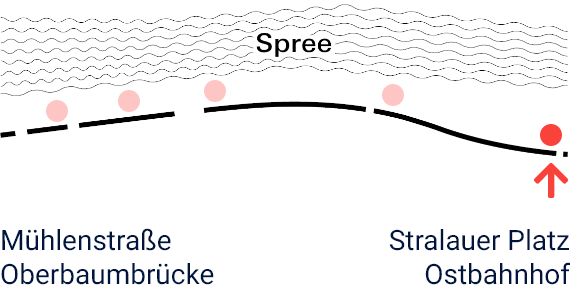
In August 1961 the East German government closed off the border between East and West Berlin. For 28 years, the walled border carved the city in two and separated the people on either side. Here at Mühlenstraße, however, a 3.60-metre-high wall was not built until 1977. Until then, the border at the future location of the East Side Gallery was secured by makeshift barriers and fences. In 1961, soldiers had made an existing wall higher between the border grounds and the adjacent land and topped it with broken glass. This formed a preliminary Berlin Wall, only a few remnants of which can still be seen.
"The Wall was like an object of fear…"
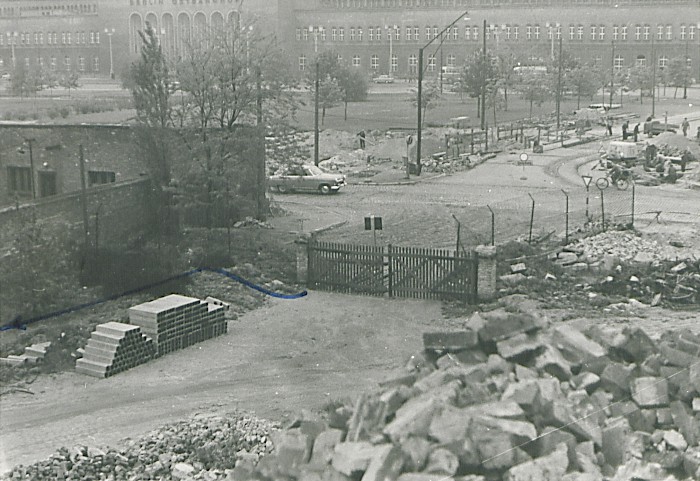
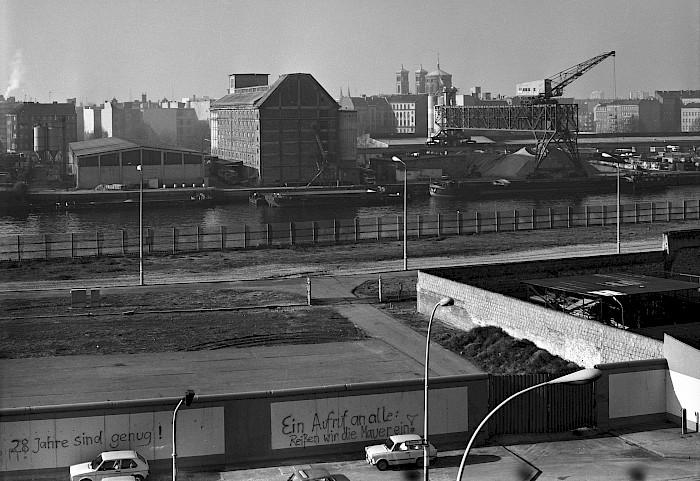
The border at Mühlenstraße lay along the route which international guests of the GDR government took from Schönefeld airport to the city centre. Here, then, the East German authorities wanted the border installations not only to prevent escapes to the West but also to look good. In 1977 it was rebuilt with border wall 75 and large-format concrete components, which were otherwise only installed where they were visible from West Berlin. The Ministry of National Defence secretly tried out different colours to paint this stretch of the Wall, finally opting for the 6th alternative: grey and white.
Along most of the border, the security installations comprised two walls with a border strip in between. Here, too, where the river Spree (which belonged to East Germany) formed a barrier to the West instead of a wall, there was a border strip. The border strip contained additional security installations such as a fence that triggered an alarm on contact, densely arranged lamps for surveillance at night, and watchtowers set up at intervals of 600 metres. Border soldiers patrolled the tarmacked patrol road that can still be seen today. Another fence stood right next to the river. The Wall itself, built in 1977, was painted white on the river-facing side — to make movements more easily noticeable.
"And you couldn’t see the West…"
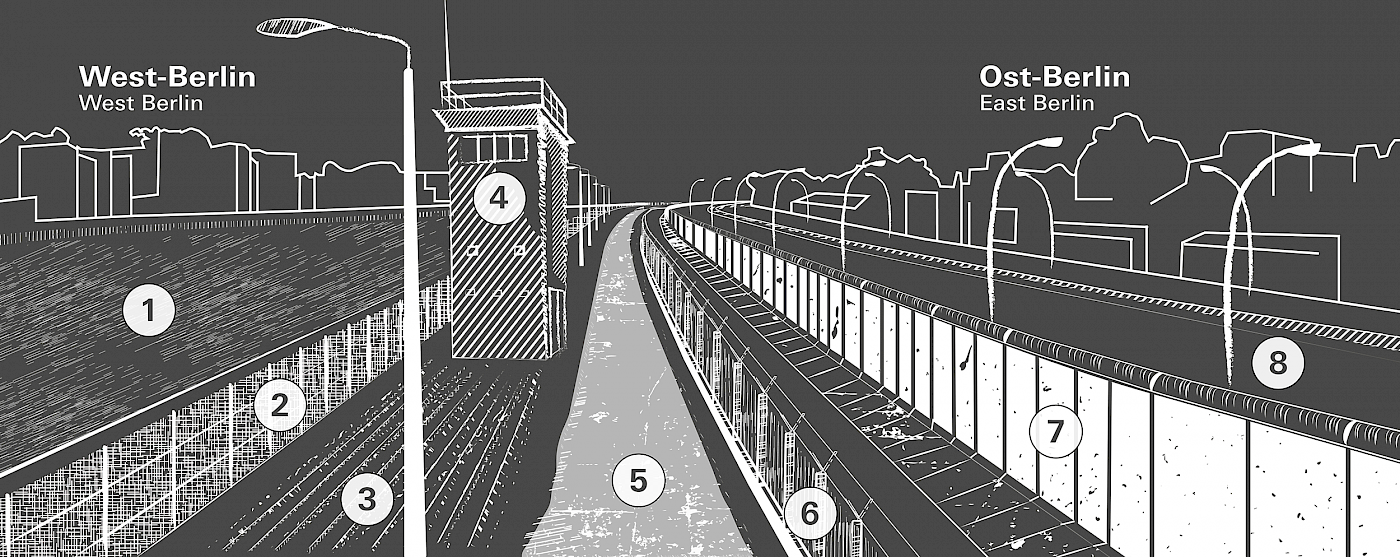
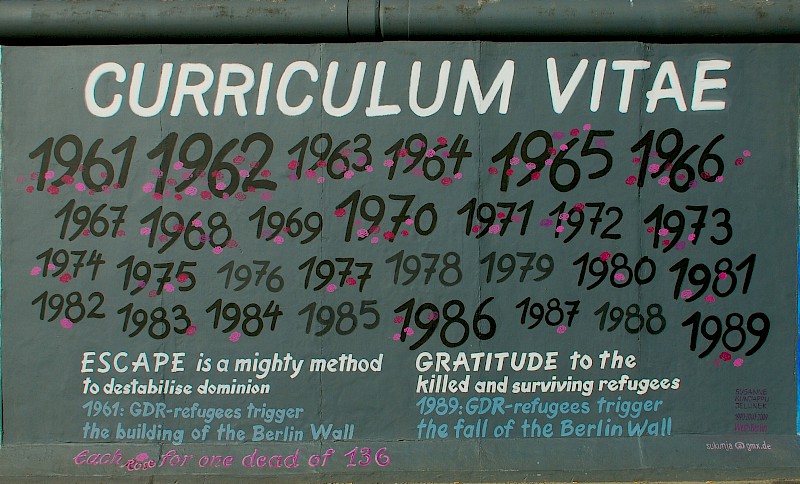
Susanne Kunjappu-Jellinek was arrested in East Berlin and jailed for “planning to illegally cross the border” in January 1971. The West German government paid for her release from political imprisonment. In 1990 she painted the Berlin Wall’s Curriculum Vitae in the East Side Gallery. In 2009 she added flowers to the dates on her painting — a rose for each life lost. At least 140 people were killed at the Berlin Wall.